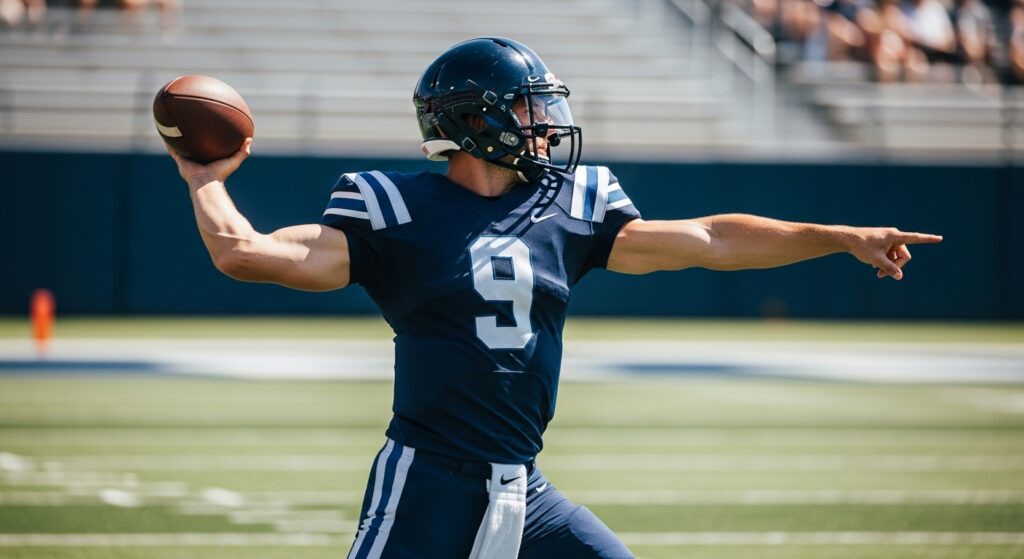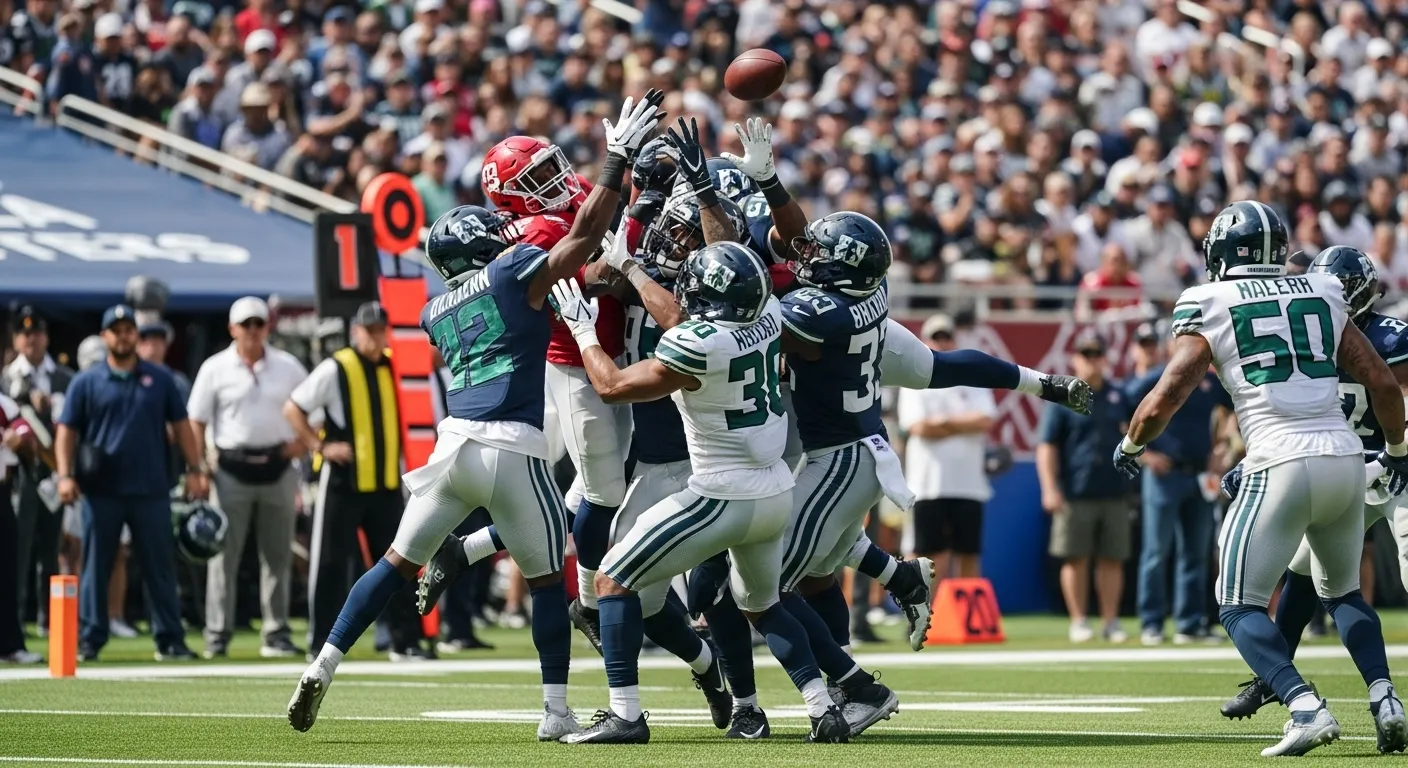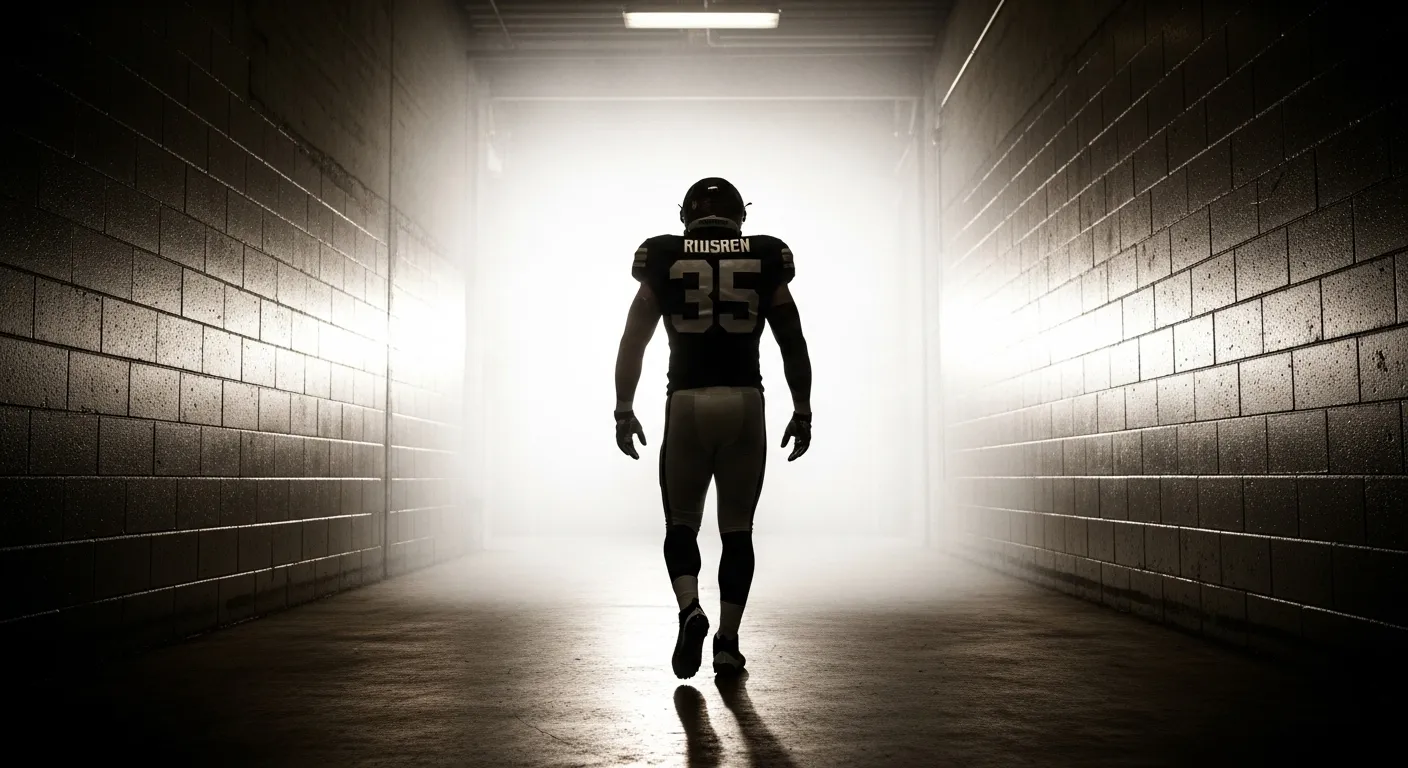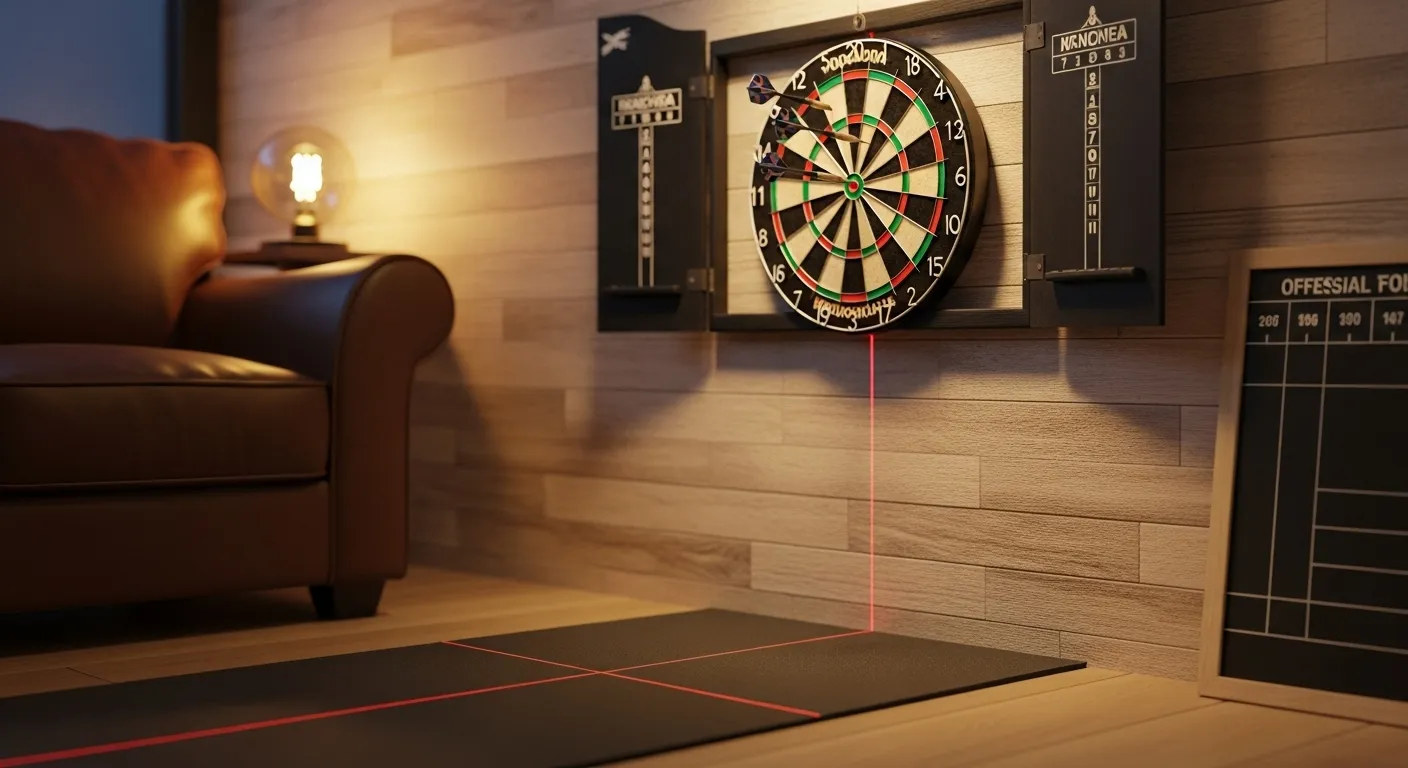Ever watched a football game where the clock’s running down, and the quarterback just, chucks it? Like, launches the ball halfway across the field with everyone watching in silence? That’s your answer if you’ve ever asked yourself what is a Hail Mary in football. It’s not some fancy play from a thick playbook. It’s desperation, pure and simple. A prayer with laces on it.
A Hail Mary pass in football is what teams pull when there’s no time left, no plan left, and no other option but to hope for a miracle. It’s that “one last shot” type of play. The name fits perfectly, doesn’t it? But the story behind it, the technique, the timing, it’s got more layers than most people realize.
The Definition of a Hail Mary Pass
Let’s keep it straightforward, what is a Hail Mary in football? It’s a long, high, last-second throw toward the end zone when a team desperately needs a touchdown and time is about to run out.
The definition of a Hail Mary pass comes down to faith and chance more than strategy. The quarterback launches the ball 50, sometimes 60 yards, hoping one of his receivers ends up under it. If it connects, it’s legendary. If not, well, that’s football.
But this play’s got roots, deep ones. It didn’t start as an official play you’d find in a football Hail Mary playbook. It began with one unforgettable moment that changed the way the sport viewed last-second miracles.
If you’re learning the basics of football and want to go deeper into key plays, check out what is a safety in football — another important concept that helps you understand how scoring and strategy truly work on the field.
Origin of the Hail Mary Pass
The origin of the Hail Mary pass goes back to 1975. Dallas Cowboys quarterback Roger Staubach threw a deep 50-yard pass to Drew Pearson against the Minnesota Vikings in a playoff game. The pass connected. Game won.
When reporters asked him how he pulled that off, Staubach said, “I closed my eyes and said a Hail Mary.”
And that was it. The phrase stuck. Before that, people just called it a “long pass” or “desperation throw.” After that, it became a cultural thing.
Now, it’s more than just football terminology, it’s a metaphor. A hail mary football play that stands for hope when everything else is gone. If you’d like a deeper look at how such hail mary strategies in football change game outcomes, check out our detailed insights in the match analysis section.

Why Is It Called a Hail Mary?
The name itself ties back to the Catholic prayer “Hail Mary, full of grace,” often said when asking for divine help. In football, it’s the same concept, players are hoping for something that defies logic.
So yeah, it’s literally a “prayer pass.” You’re not relying on formations or perfectly timed routes anymore. You’re relying on luck, gravity, and maybe a little faith.
That’s why fans hold their breath during one. You can feel the collective pause in the stadium — because for a few seconds, it’s not about who’s faster or stronger, it’s about the bounce of the ball. To see how these emotional moments shape fan culture and hail mary football traditions, explore our matchday culture insights that dive deeper into the spirit behind the game.
How Does a Hail Mary Work in Football
A Hail Mary play explained isn’t complicated, but it’s chaos. Here’s the typical setup:
- The offense spreads out: Usually three or four wide receivers line up.
- The quarterback takes the snap: He drops back, letting receivers sprint to the end zone.
- The throw: He throws high, deep, ideally 50 yards or more.
- The scramble: In the end zone, players cluster together, offense and defense alike.
- The tip or catch: The ball either lands miraculously in a receiver’s hands or gets tipped into one.
That’s it. There’s no hidden trick or special gadget move. Just raw timing and trust.

Table: An Analysis of the Parts of a Hail Mary Play
| Element | Description |
| Time | The throw was made with seconds left on the clock. |
| Power | You must be able to correctly cover 50–60 yards |
| Receiver Grouping | Bunch near the end zone to make things hard to understand |
| Stopping | The offensive line tries to keep the defenders from coming in as long as possible. |
| Good luck | Always a factor; hard to know what will happen |
Hail Mary vs. Long Pass
People mix these up a lot. A long pass football play can happen anytime during the game, when there’s still time to recover or strategize. A Hail Mary pass, though, is that last-second play when the game’s on the line.
So the difference between a Hail Mary and a long throw is really about context. The Hail Mary is all-in, no safety net. The long pass is just a tactical move.
You can think of it like this:
- Long Pass: Calculated risk.
- Hail Mary: Pure gamble.
Hail Mary Strategy in Football
Coaches don’t exactly plan for this one. You won’t see a Hail Mary strategy page in a playbook next to your slants and curls. It’s more like a “break glass in case of emergency” move.
But still, some teams practice it. They practice the timing, the positioning, the idea that if the ball gets tipped, someone’s there to grab it. The goal is to fill the end zone with enough players to outnumber the defenders.
There’s usually a “designated jumper” too, the tall guy who’s supposed to leap higher than everyone else.

Famous Hail Mary Passes in Football History
Some Hail Marys are so iconic they’re etched into NFL memory forever.
- Roger Staubach to Drew Pearson (1975): The one that started it all.
- Doug Flutie’s “Miracle in Miami” (1984): College game, but unforgettable.
- Aaron Rodgers to Richard Rodgers (2015): 61-yard bomb, one of the longest.
- Kyler Murray to DeAndre Hopkins (2020): Nicknamed “Hail Murray.” Pure art.
- Case Keenum to Stefon Diggs (2017): The “Minneapolis Miracle.” Technically not a Hail Mary, but close enough.
Each one had that same heartbeat moment. You could feel the disbelief ripple through the stadium.
Table: Notable Hail Mary Passes
| Year | Quarterback | Receiver | Team | Opponent | Result |
| 1975 | Roger Staubach | Drew Pearson | Cowboys | Vikings | Game-winning TD |
| 1984 | Doug Flutie | Gerard Phelan | Boston College | Miami | Game-winning TD |
| 2015 | Aaron Rodgers | Richard Rodgers | Packers | Lions | 61-yard TD |
| 2017 | Case Keenum | Stefon Diggs | Vikings | Saints | Game-winning TD |
| 2020 | Kyler Murray | DeAndre Hopkins | Cardinals | Bills | “Hail Murray” TD |
The Quarterback’s Role in a Hail Mary
Let’s be honest, what is a Hail Mary in football is one of the most thrilling plays in the game. The quarterback’s doing something borderline superhuman here. Throwing a football 60 yards downfield, under pressure, while 300-pound linemen are chasing you, isn’t normal. It’s physics plus panic.
A Hail Mary pass needs incredible arm strength, but also perfect timing. You can’t just fire it early. You wait until your receivers hit that sweet spot, around the 40-yard line, then launch. The ball has to stay in the air long enough for everyone to gather under it, but not so long that defenders can react.
Some quarterbacks are legends at it. Aaron Rodgers has practically built a highlight reel of famous Hail Mary passes, while Josh Allen and Patrick Mahomes can send the ball into orbit, too. To understand how game momentum shifts after such explosive plays, including timing factors like NFL halftime duration, check out our detailed guide on how long is NFL halftime (full breakdown).
That’s what makes a Hail Mary in football so different from a regular deep throw, it lives in chaos. It’s all reaction, no structure.
The Mechanics Behind the Throw
Every Hail Mary quarterback throw starts with three things:
- Footwork: It’s fast. Quarterbacks drop back five to seven steps and plant that back foot hard.
- Rotation: They twist their entire torso, it’s not just the arm doing the work.
- Release angle: Somewhere between 45° and 50° usually gives the best arc.
If you release it too low, it gets batted down. Too high, and it loses speed. It’s all feel. And when you’re surrounded by defenders, there’s no time for calculation. You just trust your body’s muscle memory.

Hail Mary Formation and Setup
In football, most Hail Mary plays come from a shotgun formation, giving the quarterback that extra second or two to see the field and set up the throw.
If you’re wondering what is a Hail Mary in football, it’s the kind of play where receivers aren’t running precise routes. It’s more like, “you three, sprint to the end zone and get in position.”
You’ll usually see four or five receivers streaking toward the goal line. Two or three go deep-middle, one might drift wide to grab a deflection, and sometimes a tight end stays back to block.
It looks unorganised, but it’s actually controlled chaos — the essence of a Hail Mary pass.
Defenses usually counter with a prevent defense, packing the field with defensive backs who wait to swat the ball down. But even then, sometimes that miracle throw lands right where it shouldn’t — in the hands of destiny.
Table: Common Hail Mary Formation Breakdown
| Position | Role | Notes |
| Quarterback | Launches deep throw | Needs time and space |
| Wide Receivers (3–4) | Sprint to end zone | Try to create jump ball opportunities |
| Tight End | Sometimes stays to block | Occasionally goes deep |
| Offensive Line | Holds defense for 3+ seconds | Key to giving QB time |
| Running Back | Usually stays back | Blocks or leaks out late |
When to Use a Hail Mary in Football
The timing is everything. You don’t just toss one mid-game. You use a Hail Mary strategy in football when the clock’s dying, you’re behind by a touchdown or less, and you’re too far for a field goal.
It’s the final gamble, when you have nothing to lose.
Most teams attempt it with fewer than 10 seconds on the clock. If you’re at midfield, it’s possible. Closer, even better. Farther back? You might not have the arm for it.
It’s rare to see one work, though. Completion rates hover around 10–15%. Still, every team practices it once in a while. Because you never know.
Why Do Teams Use a Hail Mary?
Honestly? Hope. That’s it.
It’s not about logic or play percentages. It’s about the off-chance that one wild throw changes everything. The same reason people buy lottery tickets, really.
But there’s also something emotional about it. A last-second touchdown play can flip a game, a season, even a career. The payoff is huge. Fans remember those forever, they become part of team folklore.
So yeah, teams use it because even a 1-in-100 shot is better than no shot.
Hail Mary vs. Trick Play
A lot of people confuse these. But they’re nothing alike.
A trick play is deception, like a flea flicker, a reverse, or a fake punt. It’s about misdirection, fooling the defense.
A Hail Mary, though? It’s just brute force and belief. No deception, no disguise. Everyone in the stadium knows what’s coming. The defense knows. The fans know. But that doesn’t mean they can stop it.
So, Hail Mary vs trick play, one’s a magic trick, the other’s a prayer.
Famous Quarterbacks Known for Hail Marys
You can’t talk about Hail Marys without naming the guys who made them famous.
- Roger Staubach: Started it all.
- Doug Flutie: Made it cool in college football.
- Aaron Rodgers: The modern master; multiple successful ones.
- Kyler Murray: Gave us the “Hail Murray.”
- Josh Allen: Hasn’t had one that big yet, but you can tell it’s coming.
They’ve all thrown passes that made jaws drop. It’s not just skill, it’s guts.
Hail Mary Pass vs Long Pass
We touched on it earlier, but it’s worth repeating because it’s a big misconception. A long pass can happen any time. It’s just part of the offensive strategy, maybe to stretch the defense or go for a quick score.
A Hail Mary pass happens when it’s all or nothing. It’s situational. The difference between the two? Context, urgency, and emotion.
Long passes are planned. Hail Marys are spontaneous.
The First Hail Mary Pass in Football
If you want to get historical, the first Hail Mary pass in football wasn’t actually in the NFL History. Catholic schools and players had been jokingly using the term “Hail Mary pass” since the 1930s. But it didn’t stick until Roger Staubach used it in that 1975 playoff game.
So you could say the Hail Mary pass origin story spans decades, part slang, part legend, officially sealed by one quote that became football lore.
After that, broadcasters started using it. Then fans. Then it was in headlines, stats, even video games.
That’s how language in sports evolves. One moment turns into a tradition.
Hail Mary Super Bowl Moments
Now, surprisingly, there haven’t been many true Hail Marys in Super Bowl history that actually worked. There’ve been attempts, though.
Eli Manning’s miracle throws? Close, but not quite Hail Marys. Tom Brady tried one against the Giants, came inches short. Aaron Rodgers threw one in a playoff game, not a Super Bowl, but it was perfect.
Still, the image of that final throw, ball sailing, clock at zero, it’s burned into every fan’s brain. You can feel that tension through the screen.
Hail Mary Success Over the Years
| Decade | Attempts | Completions | Success Rate |
| 1970s | 10 | 1 | 10% |
| 1980s | 23 | 2 | 8.7% |
| 1990s | 35 | 4 | 11% |
| 2000s | 40 | 5 | 12.5% |
| 2010s | 45+ | 7 | 15% |
Notice the gradual increase? Quarterbacks are stronger now, offenses are faster, and formations more creative. But still, it’s luck more than math.
Cultural Impact: Beyond the Game
Funny thing, the term “Hail Mary” doesn’t even belong to football anymore. It’s seeped into everyday speech. You’ll hear people say it in business, in movies, even politics. “They took a Hail Mary shot.”
In sports, basketball uses it too, that full-court throw at the buzzer. Soccer commentators say it when someone takes a desperate long-range goal.
It’s basically shorthand now for “a last desperate effort.”
That’s what makes it powerful, it transcends football. It’s cultural.
How to Throw a Hail Mary Pass
If you ever wondered how to throw a Hail Mary pass, here’s the breakdown:
- Drop back at least 7 steps after the snap.
- Scan the field, you’ll see the chaos forming.
- Step into the throw and rotate your torso hard.
- Launch at a high angle, aim for the center of the end zone.
- Pray someone in your jersey color catches it.
There’s no secret beyond that. Just physics and faith.
Has a Hail Mary Ever Won a Game?
Yes, several times. Some instantly ended games, Doug Flutie’s 1984 throw is a perfect example. Others changed playoff fates, like Staubach’s original pass or Rodgers’ Detroit miracle.

It’s rare, but when it happens, it’s storybook stuff. The kind of thing fans talk about for years.
Football Last Play Strategies
When the clock’s ticking and there’s one snap left, coaches usually have two choices:
- A lateral play (lots of risky passes across the field).
- Or a Hail Mary.
Most go for the latter because, frankly, it’s cleaner. Less chaos, even if the odds are slim. It’s at least a shot at glory instead of fumbling in the middle of nowhere.
FAQs (People Also Ask)
1. What does Hail Mary mean in football?
It’s a long, last-second pass thrown toward the end zone when a team’s out of time and options. Basically, a final prayer.
2. Why is it called a Hail Mary?
The phrase comes from the Catholic prayer, representing a desperate plea for divine help, fitting for a miracle play.
3. Who threw the first Hail Mary pass in football?
Roger Staubach in 1975, Dallas Cowboys vs. Minnesota Vikings, made it famous after saying the phrase postgame.
4. How often do Hail Mary passes work?
Historically around 10–15% of attempts connect. It’s rare but unforgettable.
5. What’s the difference between a Hail Mary and a long pass?
A long pass is a planned play during the game. A Hail Mary is a desperate, all-or-nothing final throw when the clock’s almost out.
and yeah, that’s basically the whole picture, the meaning, the madness, the mechanics. A play born out of panic that somehow turned into poetry.
No need to overthink it. It’s football’s purest gamble. Sometimes it hits, sometimes it doesn’t. That’s the beauty of it.

I’m Daniel Moore, and I live for the thrill of the game. Get energetic live commentary, detailed match analysis, data-backed betting predictions, and official team rankings right here.



